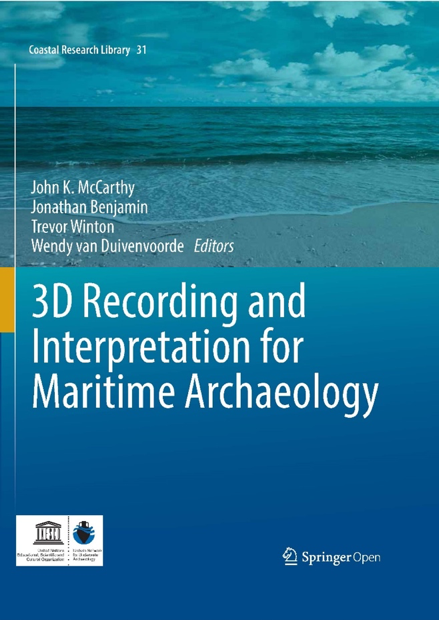3D Recording and Interpretation for Maritime Archaeology - 2019
Jonathan Benjamin
The volume, 3D Recording and Interpretation for Maritime Archaeology was successfully completed and published as part of Springer Nature’s Coastal Research Library, launched in April 2019. It contains 14 peer-reviewed chapters by some of the leading experts on the application of spatial technologies for maritime archaeology, with contributors from around the world. Included in the volume are authors and content from Lebanon, Egypt, Europe and Australia. The content of the book includes recording and analysis of maritime archaeology through emerging technologies, including both practical and theoretical contributions. Topics include photogrammetric recording, laser scanning, marine geophysical 3D survey techniques, virtual reality, 3D modelling and reconstruction, data integration and Geographic Information Systems. The funding provided by the HFF went directly to the Open Access fee, enabling free distribution of this volume worldwide.

As a scholarly publication, the audience for the book includes students and researchers, as well as professionals working in various aspects of archaeology, heritage management, education, museums, and public policy. It will be of special interest to those working in the field of coastal cultural resource management and underwater archaeology but will also be of broader interest to anyone interested in archaeology and to those in other disciplines who are now engaging with 3D recording and visualization. The book represents a landmark publication in the discipline, the first volume dedicated to the subject of 3D technologies on the discipline of maritime archaeology. These technological developments are radically changing how we investigate the physical traces of the past in coastal and maritime environments. Many of the technological applications presented are the first examples of their kind to be published in this discipline, and this will be an invaluable resource to future maritime archaeologists.
The impact of Open Access status is clearly visible in the metrics for this publication. Since the online release in March, the ebook has had a total of 39,000 downloads. This is a fantastic result within less than five months and demonstrates both the relevance of the subject and the value of Open Access publising. This level of interest is far ahead of similar books in the same category according to the Bookmetrix data presented on the book’s webpage:
https://www.springer.com/gp/book/9783030036348
100% of the HFF funding went to the Springer Books Open Access fee. Additional funding from other sponsors supported the launch event and printing of hard copies. Hard copies of the book were sent to all first authors and a copy has also been sent to the Honor Frost Foundation. The primary funding of the Honor Frost Foundation is acknowledged with a logo on the front cover, alongside the UNESCO Untiwin logo.
A book launch was held in Adelaide at the Flinders University Victoria Square campus on the 3rd of April 2019 and was well attended, followed by a reception. The two PhD student editors of the book, John McCarthy and Trevor Winton have recently received Ruth and Vincent Megaw Award for Outstanding Collaboration in Archaeological Research and Practice.
